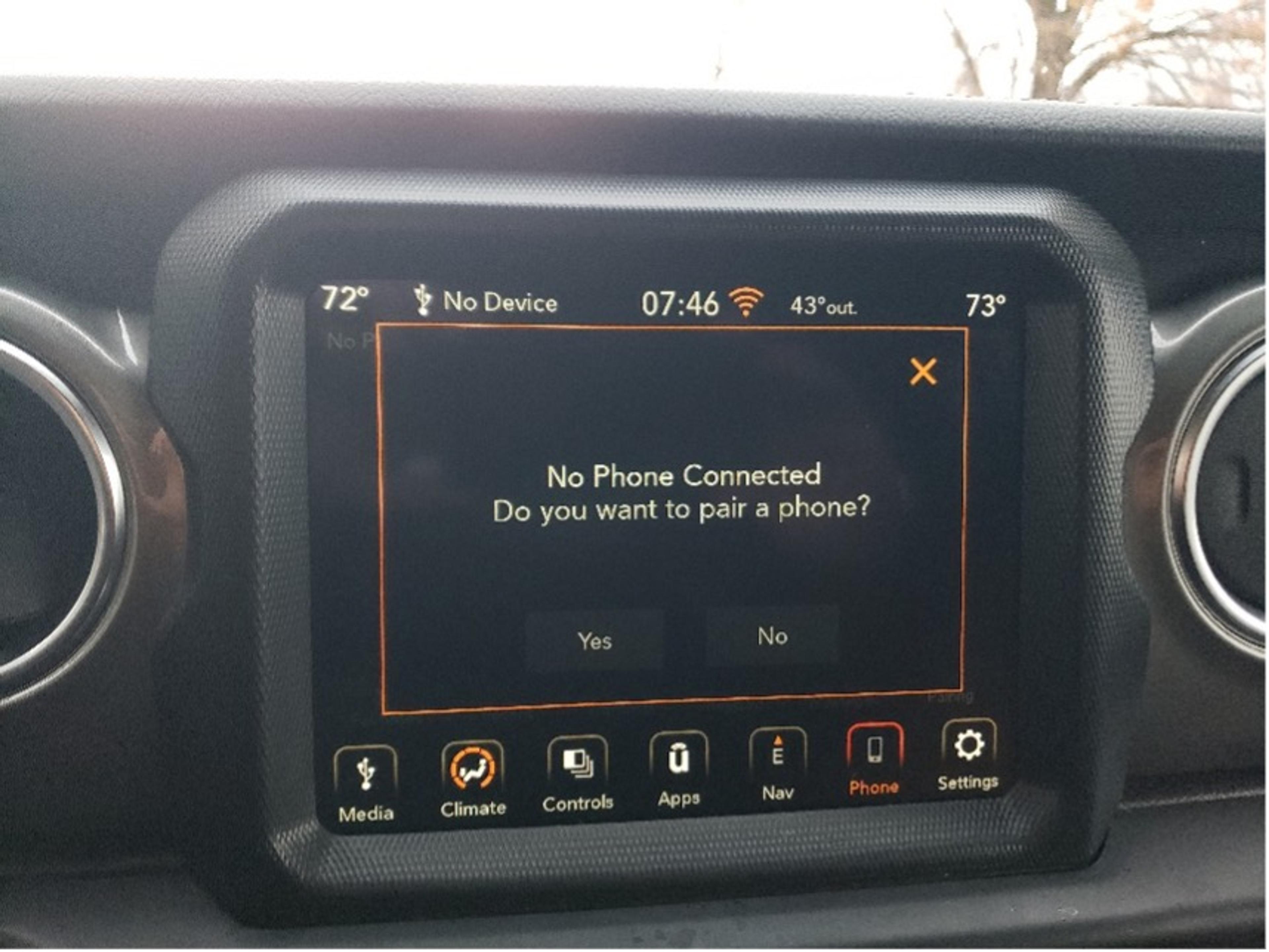With each new technology, our links to the world multiply. Our phones, watches, even washing machines are increasingly in contact with the world and each other. The most complex of these new forms of computing offer instant access to information, entertainment and social interaction. Such technologies – embedded in phones, smartwatches, car dashboards and other devices – hope to turn us into masters of multitasking. They suggest we can become savvy users who effortlessly juggle calls, messages and other tasks as we navigate the world around us. But science tells a different story. Our brains are simply not wired for this much connection.
As the cognitive neuroscientist David Strayer at the University of Utah explains: ‘If you have people who are multitasking a lot, you might come to the conclusion they are good at multitasking. In fact, the more likely they are to [multitask], the more likely they are to be bad at it.’ The issue is the drain on our attention that occurs when we do too many complex tasks at the same time. It is known as ‘cognitive distraction’ and can lead to mistakes, confusion and malfunctions in our experience of the world. In the right circumstances, it can also be dangerous – sometimes fatal.
There is no better example of cognitive distraction than distracted driving, which is where the rubber literally touches the road. While behind the wheel of a car, a significant level of distraction can accompany one action in particular: phone usage. For some, this can result in severe driving impairment. It represents a serious danger hidden within the connective rhythms of our everyday lives.
Conflicting messages about the dangers of using a smartphone while driving are coming at us from all directions. You have surely seen warnings that handheld texting while driving is one of the most dangerous of these behaviours, and that’s true. However, when it comes to other forms of communication over the phone, the messages are confusingly mixed.
Some countries have made it illegal to hold a phone while driving, effectively outlawing handheld calls behind the wheel. So have several states in the US.

Georgia, United States. Photo supplied by author
Safety advocates go further and argue that even hands-free versions of calling, texting and internet usage while driving can be dangerous. And yet, it is possible to infer the opposite from the world around us. For example, those laws that ban handheld phones simultaneously allow for hands-free phone usage behind the wheel, perhaps implying that this is a safe thing to do. What’s more, the dashboards of contemporary cars are built with the expectation that drivers will be using their phones.

Photo supplied by the author
New model cars enable drivers to utilise a number of their smartphone’s functionalities while driving – including hands-free calling – all accessed through increasingly complex dashboard touchscreen ‘infotainment’ systems. Even steering wheels themselves are often equipped with buttons for making and accepting calls. These dashboard computing systems, enabling ‘connectivity’ with the world outside the car, are often a central feature of automotive advertising campaigns. These design and marketing choices suggest that using a smartphone in certain ways while driving can be safe. This suggestion is amplified by the social pressures that many drivers may feel – the pressure to stay connected to others, to take work calls, or to answer messages from friends.
In the face of these implications and pressures, are hands-free devices – along with other in-car technologies – truly safe to use while driving? Can we really master our use of increasing technological connectivity without succumbing to cognitive distraction? These are no small questions. Taking a work call or messaging a friend while on the road may appear to be trivial, but they can have serious, even deadly, consequences. Before the COVID-19 pandemic, the rates of car crash fatalities in the US were rising sharply. Distracted drivers put more than their own lives at risk. They endanger everyone else on the road, too: passengers, cyclists and pedestrians.
During the past three decades, research in the field of cognitive science on this topic has yielded a core finding: both handheld and hands-free phone conversations are associated with a similar dangerous level of driving impairment. This body of research is extensive enough to be the subject of multiple meta-analyses and reviews over the years. These core findings appear in epidemiological studies that contrast things like phone records and hospital and accident data. They also show up in simulator and test-track experiments.
Emotionally intense conversations are ‘considerably more dangerous’
Simulator studies reveal associations between phone conversation and decreased situational awareness, as well as dangerous increases in driver reaction times to changing road conditions. Even ‘naturalistic’ studies that utilise in-cab videos of real-world driving are now able to confirm these dangers because the datasets have finally grown large enough to include information on real accidents.
The exact magnitude of the drop in driving performance associated with phone conversation varies by study. The kind of conversation you are having is of course one factor – emotionally intense conversations are ‘considerably more dangerous’. Complexity is another factor. Other studies have compared talking on the phone with drunk driving. And some findings have even revealed that phone usage leaves a residual distraction, with impairment lasting long after the call (or texting) has ended.
If these are some of the central findings, then we are presented with a challenge. How do we apply this knowledge to the fast-moving context of advancing connective technologies, which demand more and more of our attention?
One central lesson is that conversation over the phone itself can constitute a significant distraction. Of course, the actions of taking your eyes off the road or taking a hand off the steering wheel to dial or text are dangerous driving behaviours. But these studies also show that the content of a phone conversation also has the potential to be dangerously distracting. (Passenger conversation is less distracting than phone usage, but passengers do have the potential to be a dangerous distraction, too, especially for younger drivers.) Experts call these drops in driving performance ‘cognitive distraction’ because they involve more than simple physical acts, like taking a hand off the wheel or taking your eyes off the task of driving. Cognitive distraction suggests our problems go much deeper than holding a phone. A key issue that we need to wrap our heads around is a rapidly evolving frontier of connective technologies: voice-activated hands-free programs.
As computing has advanced through this century, we’ve developed multiple ways to interact with our cars and phones by voice. We’ve used speakerphones, voice commands, voice-interactive computing and voice-to-text translation. In our cars, we can now use our voices to talk to another person over a hands-free headset, change the temperature, ask a virtual assistant a question or compose a social media post.
If hands-free calls have been found to be just as distracting as handheld calls, then the ‘hands-free phones’ at issue are things like your phone’s speakerphone functionality, or the use of a hands-free headset. However, these findings should apply equally to making hands-free calls from your car’s dashboard system, which can be paired with your smartphone. Despite what your car’s infotainment system might imply, there are serious risks associated with making these kinds of calls. Just because your dashboard touchscreen or steering wheel has a button allowing you to make calls, doesn’t mean this is a safe practice.
Siri and Alexa are susceptible to annoying (and distracting) errors
But what about issuing simple voice commands to your car? The use of these commands to control the basic functionalities of a car’s dashboard features can be safer than the older buttons and knobs. While even these acts are not distraction-free, it makes sense that using your voice to enter simple commands – such as adjusting the radio volume or changing the temperature – would be less distracting than taking a hand off the wheel to turn a physical knob. Research tends to support these intuitions. However, studies also show that voice commands do not eliminate visual distractions. Users still double-check voice entries for errors. For example, someone entering a mapping destination or dialling a phone by voice may also visually check that the input was entered correctly.
Of course, spoken interactions with computational systems in a car can be more complex than entering simple commands. One example is the use of digital voice assistants like Siri and Alexa. These virtual interlocutors can be significantly distracting – and they are susceptible to annoying (and distracting) errors, sometimes babbling on irrespective of changing driving conditions.
In my view, a central danger introduced by these technologies is the potential distraction of heightened connectivity: writing messages to others by voice, or having written messages spoken aloud. Multiple smartphone apps, sometimes available through the dashboard of a car, can read text aloud and take dictation, allowing drivers to compose and listen to text messages, social media posts and emails. However, interacting with others outside the car through this medium poses similar risks to hands-free phone conversations. More than a decade of research has revealed that hands-free written communication – particularly through spoken text messages – constitutes a serious danger because of the cognitive demands it places on drivers. In fact, hands-free texting is proving to be even more dangerous than handheld calls.
The ways that drivers can become distracted by connective technologies is not only limited to sending messages, making calls or using digital assistants. Some people use the internet in other ways while behind the wheel. A survey of more than 2,000 people released by AT&T in 2015 found that more than a quarter browsed online while driving, more than 15 per cent took and posted selfies, and 10 per cent used videochat. And this kind of internet usage while driving appears to be steadily increasing: in 2010, 17 per cent of those surveyed admitted to it. By 2020, that number had jumped to 36 per cent.
Technological development isn’t going to slow down anytime soon. In fact, it’s likely to throw more distracting technologies our way, each allowing more seamless ways to connect with the world. But, as research shows, our brains can’t multitask effectively. Human beings are simply not capable of reliably processing multiple demands at the same time. Our cognitive limits are real, and so are the bad habits we form with our devices. In the end, it’s up to us – drivers, and users of connective technologies – to put safety over connectivity. The simplest solution? Accept that you’re not as good at multitasking as you might think, and keep your focus where it belongs: on the road.








